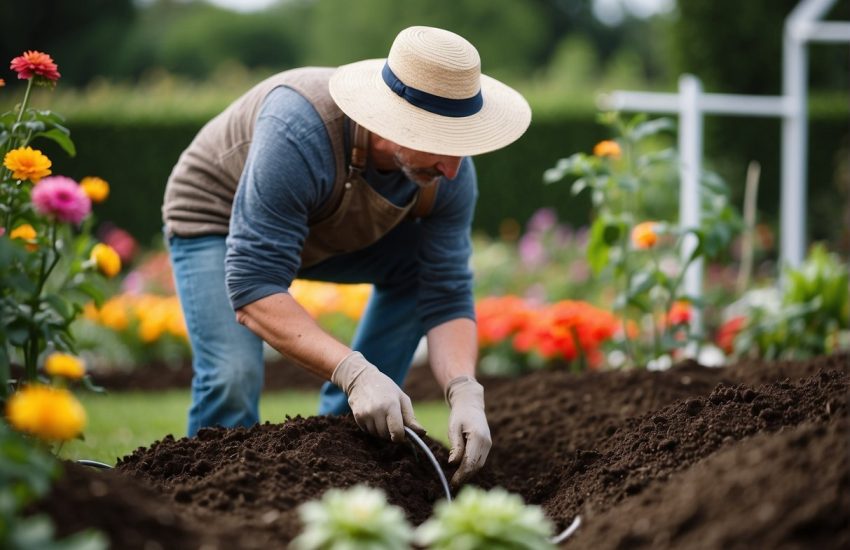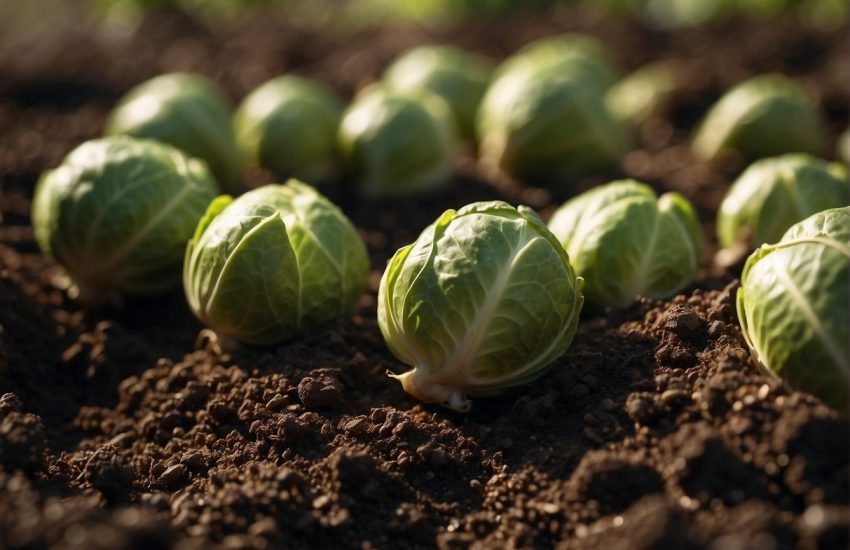Deer and Rabbit Repellent Plants: Natural Solutions for Garden Protection
Deer and rabbit repellent plants are a great way to keep these pesky critters from damaging your garden. With their voracious appetites, deer and rabbits can quickly destroy a garden, leaving behind a trail of devastation. Fortunately, there are many plants that these animals find unappetizing, and planting them in and around your garden can be an effective way to protect your plants.

Deer and rabbits are known to eat a wide range of plants, from flowers to vegetables. They can easily jump over fences and other barriers, making it difficult to keep them out of your garden. However, there are many plants that these animals don’t like the taste of, and planting them strategically can help to deter them. Some of these plants are also attractive and can add beauty to your garden, making them a win-win solution.
Understanding Deer and Rabbit Repellent Plants
Deer and rabbits are common herbivores that can cause significant damage to gardens. One effective way to keep them at bay is by planting repellent plants. These plants have certain characteristics that make them unappealing to herbivores, such as a strong smell or bitter taste. In this section, we will explore the characteristics of repellent plants, popular repellent plants and their properties, designing a repellent garden layout, non-plant repellents and barriers, and homemade repellent recipes.
Repellent Plant Characteristics
Repellent plants have various characteristics that make them unattractive to herbivores. Some plants have leaves with a strong scent, while others have a bitter taste or prickles and thorns. Woody stems are also a common characteristic of repellent plants. These characteristics make it difficult for herbivores to eat the plants, which in turn deters them from entering the garden.
Popular Repellent Plants and Their Properties
There are several popular repellent plants that gardeners can use to keep deer and rabbits away. Lavender, daffodils, mint, garlic, marigolds, alliums, sage, and rosemary are all effective at repelling herbivores. Lavender has a strong scent that deer and rabbits find unappealing, while daffodils have a bitter taste. Mint, garlic, and alliums have a strong smell, and marigolds and sage have prickly leaves.
Designing a Repellent Garden Layout
When designing a repellent garden layout, it’s important to consider the placement of the plants. Repellent plants should be placed around the perimeter of the garden to create a barrier. Gardeners can also interplant repellent plants with other garden plants, such as perennials, shrubs, annuals, and trees. This creates a diverse garden that is unappealing to herbivores.
Non-Plant Repellents and Barriers
In addition to repellent plants, there are other non-plant repellents and barriers that gardeners can use. Fencing is a common method of keeping deer and rabbits out of the garden. Motion-activated sprinklers are also effective at deterring herbivores. Metal and nontoxic animal repellent sprays can also be used to keep deer and rabbits away.
Homemade Repellent Recipes
Homemade repellent recipes can also be effective at keeping deer and rabbits away from the garden. Some popular ingredients for homemade repellents include eggs, milk, clove, carrot, onion, cayenne pepper, and liquid dish detergent. These ingredients can be mixed together and sprayed on the plants to create a strong smell or bitter taste that herbivores find unappealing.
Overall, planting repellent plants is an effective way to keep deer and rabbits away from the garden. By understanding the characteristics of repellent plants and designing a repellent garden layout, gardeners can create a beautiful and diverse garden that is unappealing to herbivores.
Integrating Repellent Plants into Your Garden

When it comes to protecting your garden from deer and rabbits, integrating repellent plants is an effective and natural solution. Here are some tips on how to incorporate repellent plants into your garden.
Companion Planting for Protection
Companion planting is the practice of planting different species of plants together to benefit each other. In terms of deer and rabbit control, planting repellent plants alongside susceptible plants can help protect them. Some examples of repellent plants that can be used for companion planting include bee balm, chives, peppers, peonies, and vinca. These plants have strong scents or tastes that repel deer and rabbits.
Maintenance Tips for Repellent Plants
To ensure that your repellent plants remain effective, it is important to take proper care of them. Water them regularly, especially during dry spells, to promote healthy growth and new foliage. Pruning and deadheading can also help stimulate new growth and keep the plants looking neat and tidy. Additionally, applying a layer of mulch around the base of the plants can help retain moisture and suppress weeds.
Aesthetic and Functional Considerations
When selecting repellent plants for your garden, it is important to consider both their aesthetic and functional qualities. Some plants, such as zinnias, black-eyed susan, bleeding heart, and butterfly bush, not only repel deer and rabbits but also add color and beauty to your garden. Other plants, such as kale, spinach, and beans, are not only edible but also deer and rabbit-resistant.
Alternative Strategies for Deer and Rabbit Control
While integrating repellent plants into your garden is an effective strategy for deer and rabbit control, there are also other methods that can be used in conjunction with plantings. Installing physical barriers, such as fences or netting, can help keep deer and rabbits out of your garden. Another option is to use deer and rabbit repellent sprays or granules, which can be applied directly to susceptible plants. However, it is important to note that some repellent sprays or granules may contain harmful chemicals and should be used with caution.
By incorporating repellent plants into your garden and taking proper care of them, you can protect your plants from deer and rabbits in a natural and effective way.


